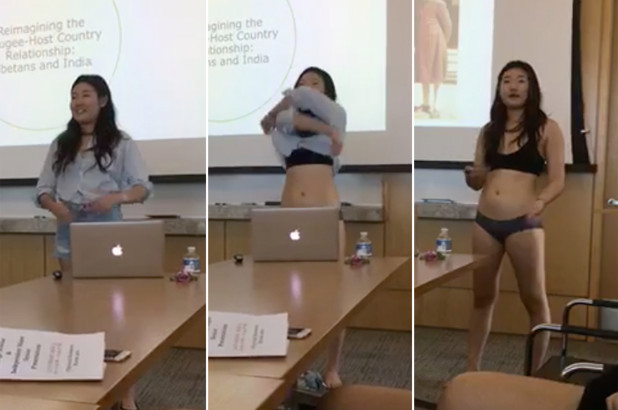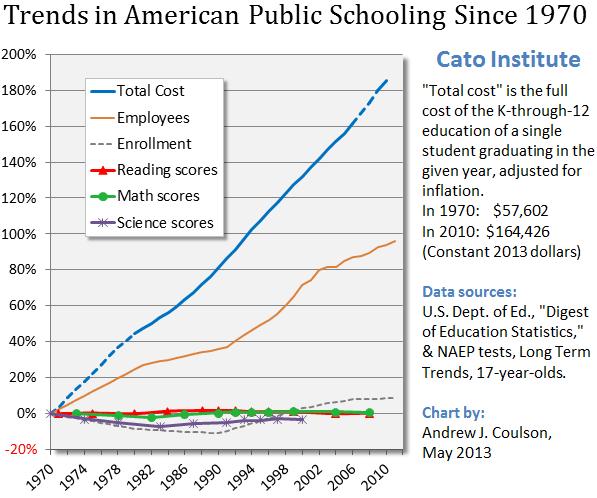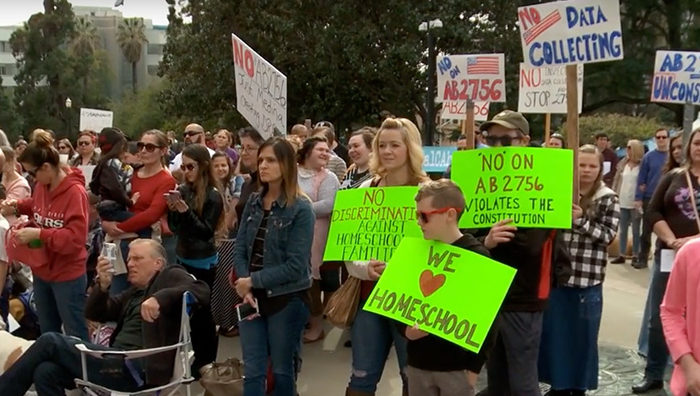Muted Reaction to Student Presenting Thesis in Her Underwear Shows Corruption of Our Colleges
The most remarkable thing about the title of this column [“Cornell Student Presents Thesis in Her Underwear”] is that not one reader will think it’s a joke. That, my friends, is further proof of the low esteem in which most Americans hold our universities.
The left has rendered our universities, in the description of Harvard professor Steven Pinker, laughingstocks.

Letitia Chai
As reported in The Cornell Daily Sun and then around the world, this is what actually happened last week at Cornell University, one of our “Ivy League” universities: Senior Letitia Chai presented a trial run of her scholar senior thesis wearing a blue button-down shirt and cutoff jean shorts. Her professor, Rebekah Maggor, asked her, “is that really what you would wear?”
The professor went on to say that Chai’s shorts were “too short”—that as a speaker she was making a “statement” with her clothes. As reported in the newspaper, “The class does not have a formalized dress code, but asks students to ‘dress appropriately for the persona [they] will present.’”
Offended and hurt by the professor’s suggestion, Chai decided that she would present her thesis in even less clothing. She appeared before her fellow students in her shirt and shorts and then removed them. As she stripped down to a bra and panties, she explained:
I am more than Asian. I am more than a woman. I am more than Letitia Chai. I am a human being, and I ask you to take this leap of faith, to take this next step—or rather, this next strip—in our movement and to join me in revealing to each other and to seeing each other for who we truly are: members of the human race. … We are so triumphant, but most importantly, we are equals.
Twenty-eight of the 44 audience members followed suit, stripping down.
Chai’s presentation was livestreamed. It can still be seen on Facebook.
Eleven students who were present wrote a long statement defending both the professor—who apologized profusely—and Chai. It read:
As students who firmly believe in the tenants [that Cornell students do not know the word is ‘tenets,’ not ‘tenants,’ is not surprising] of justice and the commitment to fair representation, we feel that it is our duty to make the following statement. We support Letitia’s commitment to the cause of women’s rights. … We strongly support and identify with Letitia’s fight for equality in the treatment of all people, regardless of race, gender, color, creed, sexuality, or appearance. The majority of us are students of color, from multiethnic backgrounds, who very much relate to Letitia’s frustration with systemic oppression that is part of the fabric of this country. … Our recollection of that day is as follows:
Letitia stood up to give her speech. Before she began, our professor asked Letitia if she would wear ‘those shorts’ to her actual presentation on Saturday. Our professor regularly asks all of the students, male and female, such questions to clarify appropriate attire for public speaking. Our professor went on to say that what you wear and how you present yourself make a statement. She noted that if you were to wear jean shorts to your thesis presentation, that is a statement. Her focus on attire was a means of noting the importance of professionalism in certain public speaking situations. … Throughout the semester … We have also had several meaningful dialogues on privilege, discussed how to avoid [white] savior narratives. … Our professor … often illustrates the ways to us in which society can institute a socialized behavior (for females, acting apologetic for opinions) due to systematic oppression.
It’s hard to know which aspect of this story is the most ludicrous and the most disturbing. Is it the students stripping down to their underwear? That delivering a senior thesis in one’s underwear before fellow students, most of whom also stripped down, is acceptable—even honored—at Cornell University tells you just about all you need to know to understand the degraded state of Cornell and most other American universities. And if delivering a senior thesis in one’s underwear is a blow for women’s equality, why wear underwear? Why not deliver the thesis naked?
Is it the pervasive assumption of America’s “systemic oppression” of women and ethnic minorities? If there are luckier young women in the world than those who attend Cornell and other American universities, it is hard to imagine who they might be. Yet they have been so effectively indoctrinated by their left-wing instructors in elementary school, high school, and college they walk around thinking of themselves as victims of “systemic oppression” in what is probably the freest and most opportunity-giving society in human history.
Or is it the apparent absence of any criticism of Chai by even one of the 1,650 faculty members of Cornell University? It is inconceivable that even at Cornell, there is not one faculty member who found this young woman’s behavior an insult to Cornell and the once-exalted field of higher education. Yet they so fear their left-wing colleagues and left-wing students that they have said nothing.
This story reconfirms what I regularly tell parents: Sending your child to college is playing Russian roulette with their values.
COMMENTARY BY
Dennis Prager
Dennis Prager is a columnist for The Daily Signal, nationally syndicated radio host, and creator of PragerU. Twitter: @DennisPrager.
Dear Readers:
With the recent conservative victories related to tax cuts, the Supreme Court, and other major issues, it is easy to become complacent.
However, the liberal Left is not backing down. They are rallying supporters to advance their agenda, moving this nation further from the vision of our founding fathers.
If we are to continue to bring this nation back to our founding principles of limited government and fiscal conservatism, we need to come together as a group of likeminded conservatives.
This is the mission of The Heritage Foundation. We want to continue to develop and present conservative solutions to the nation’s toughest problems. And we cannot do this alone.
We are looking for a select few conservatives to become a Heritage Foundation member. With your membership, you’ll qualify for all associated benefits and you’ll help keep our nation great for future generations.
ACTIVATE YOUR MEMBERSHIP TODAY
EDITORS NOTE: The featured image of the Cornell University campus is by Kickstand/Getty Images.




 The real issue at hand is why more and more money never produces better outcomes.
The real issue at hand is why more and more money never produces better outcomes.











 Salaries lag in some states, but nationally, wages and benefits outpace the private sector.
Salaries lag in some states, but nationally, wages and benefits outpace the private sector.











